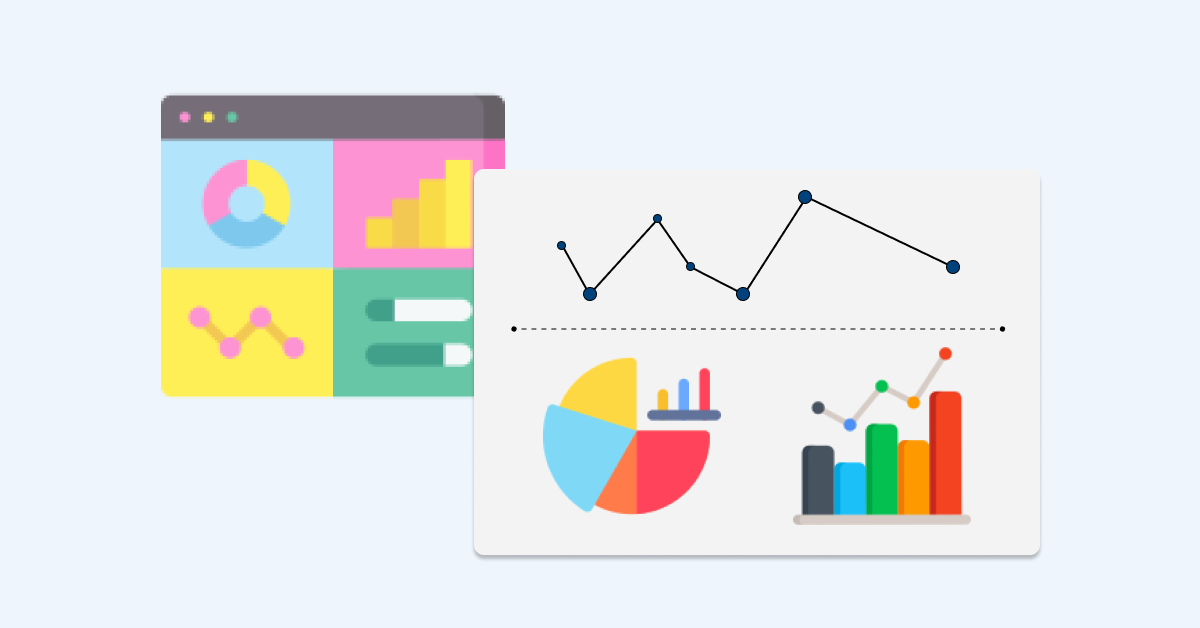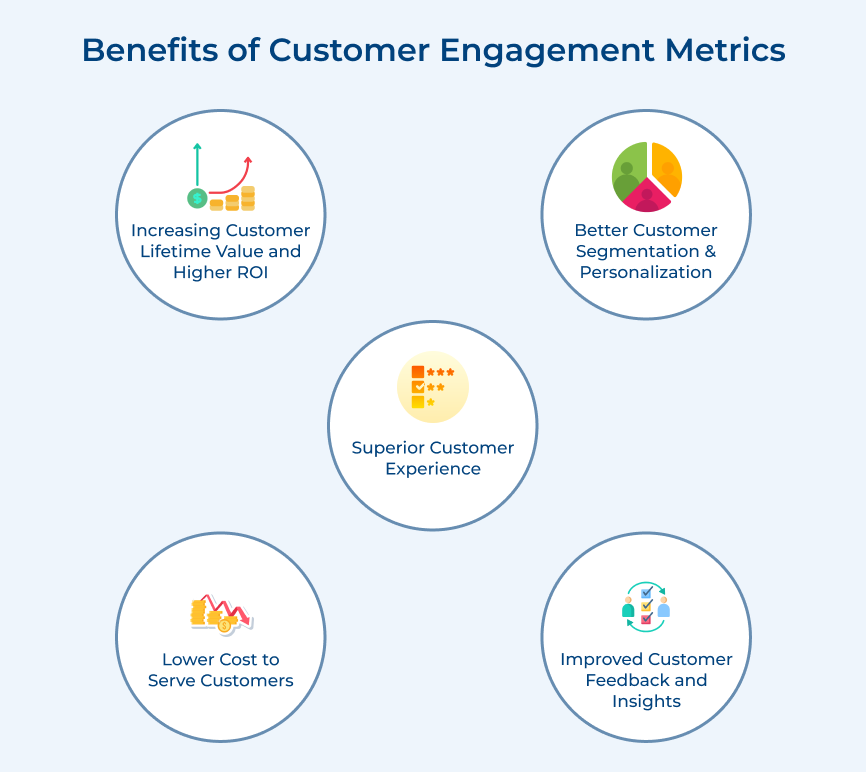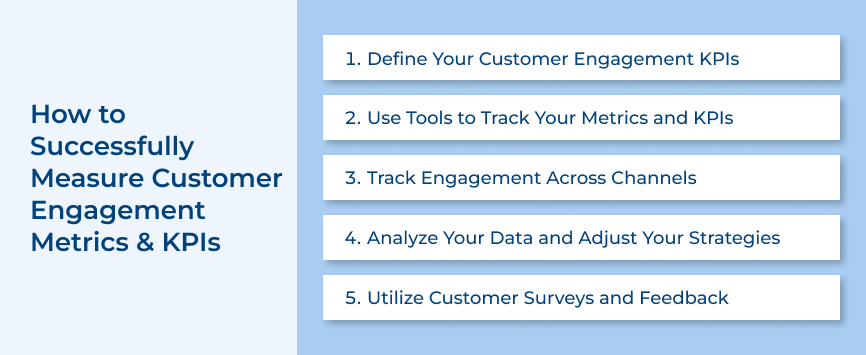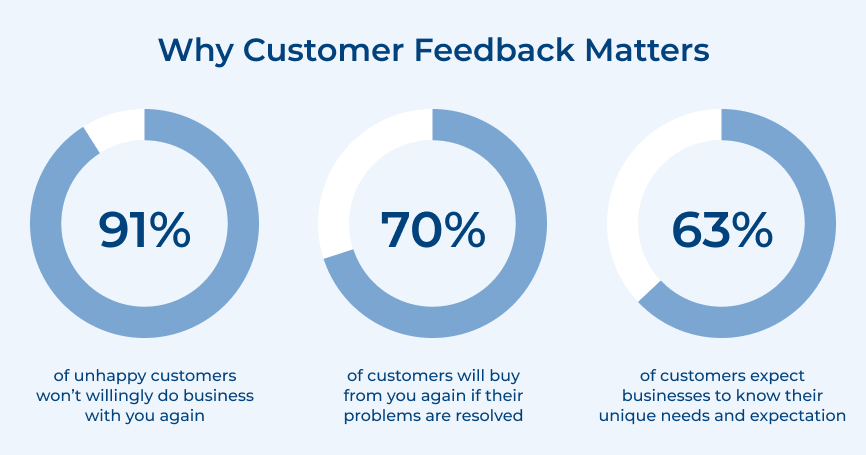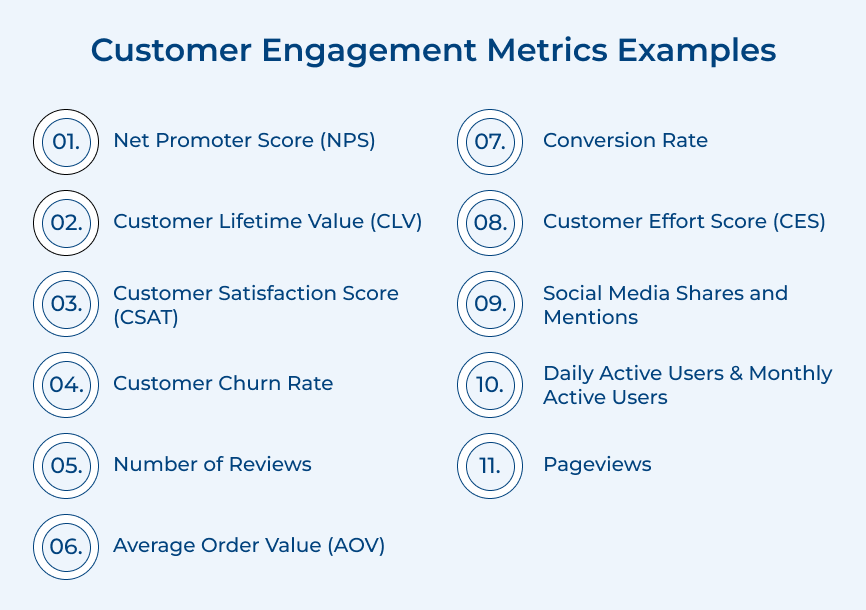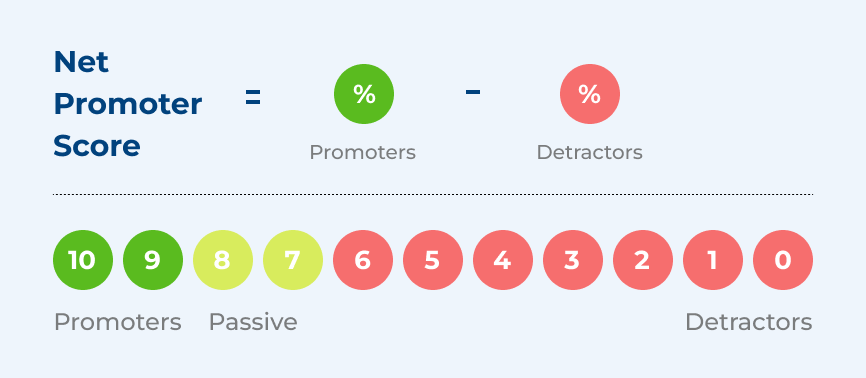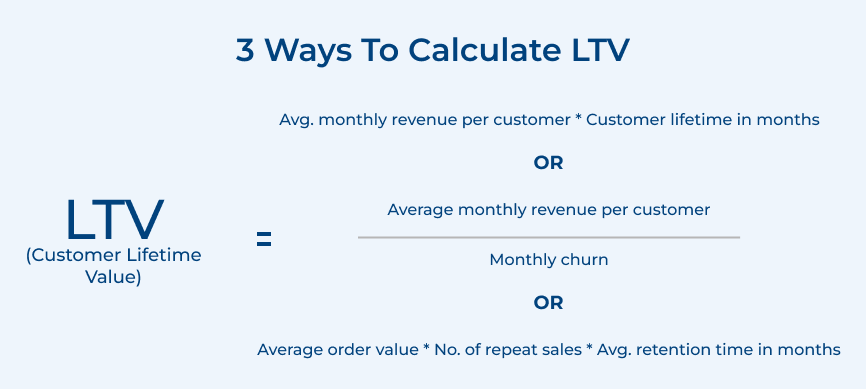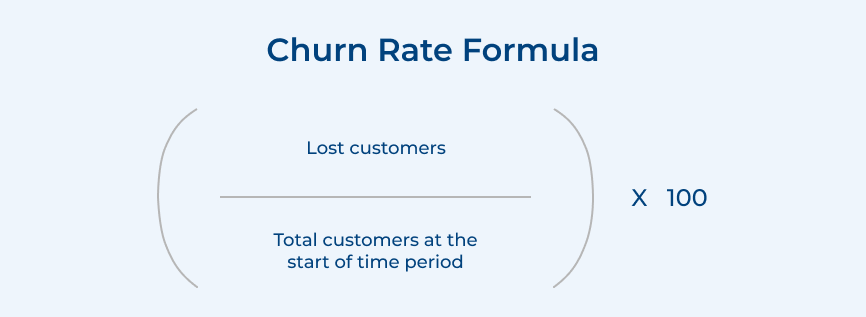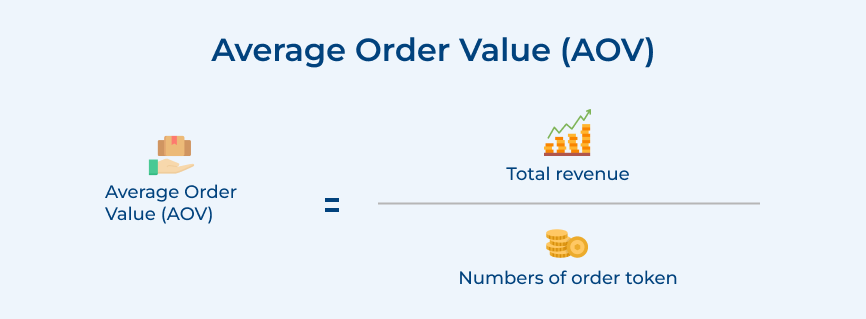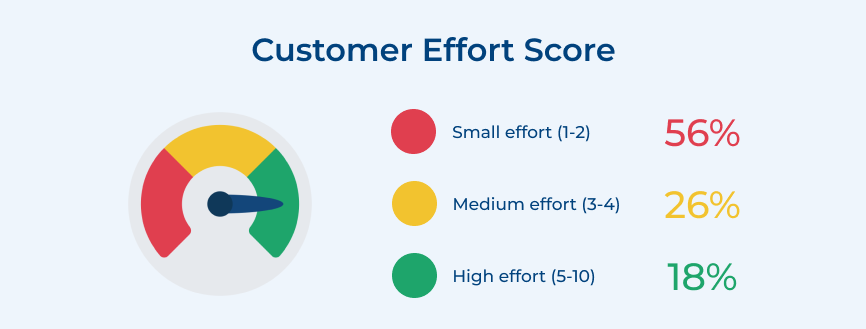-
Increasing Customer Lifetime Value and Higher ROI
Businesses gain valuable insights into customer behavior and preferences by actively tracking user engagement KPIs. The data lets them personalize their marketing efforts and product offerings to specific customer segments.
The conversion rates and customer lifetime value significantly increase, giving a higher ROI. Understanding how engaged customers interact with the business enables targeted strategies to maximize their value and drive business growth.
-
Better Customer Segmentation & Personalization
Measuring user engagement metrics allows businesses to segment their customer base based on behavior, preferences and interests. The segmentation allows for more precise targeting and personalized experiences. Businesses can enhance customer satisfaction, loyalty and engagement by delivering tailored content.
As per Salesforce’s research, 64% of customers expect tailored engagements based on past interactions. The level of personalization promotes stronger connections and increases the likelihood of repeat purchases.
-
Lower Cost to Serve Customers
Engaged customers are more satisfied and require less support, resulting in lower customer service. Businesses can identify areas where customers may need additional assistance or encounter challenges by measuring customer engagement.
Brands can proactively address these issues, reduce support requests and optimize the customer experience. Businesses can minimize the expenses required to serve their customers effectively by streamlining processes, improving self-service options and providing proactive guidance.
-
Superior Customer Experience
Measuring customer engagement is vital in delivering a superior customer experience. Businesses can attune their products, services, and marketing efforts to meet the requirements by understanding customer preferences.
The customer-centric approach enhances the overall user experience, ensuring customers have a seamless and satisfying journey throughout their interactions with the business. Continuously optimizing engagement metrics can identify opportunities to improve the customer experience and build strong brand loyalty.
-
Improved Customer Feedback and Insights
Measuring customer engagement provides valuable feedback on customer preferences, satisfaction levels and areas for improvement. Businesses can gather feedback through surveys, reviews and customer interactions by actively monitoring engagement metrics.
Brands can make informed decisions to enhance their offerings, address customer concerns, and continuously improve their customer-centric strategy. It facilitates a culture of continuous improvement and helps businesses stay aligned with evolving customer expectations.
How to Successfully Measure Customer Engagement Metrics & KPIs
Let us understand how to successfully measure customer metrics and KPIs, ensuring you not only capture the right data but also harness it to drive meaningful results for your business.
1. Define Your Customer Engagement KPIs
Businesses must define their customer engagement key performance indicators (KPIs) before automating customer service. Metrics such as website traffic, click-through rates, email open rates, and sales conversion rates can be used. Once you have identified the relevant metrics, establish specific KPIs that align with your goals and objectives.
Tailoring the KPIs to align with the specific business goals and objectives is essential. If your primary focus is driving website conversions, metrics like click-through and sales conversion rates become highly relevant. Clearly defining the KPIs will help you establish a benchmark for measuring progress and evaluating the impact of the customer engagement efforts.
Actionable tips:
Identify relevant metrics: Analyze your business goals and customer journey to identify the key metrics that reflect meaningful customer engagement.
Set specific KPIs: Ensure your KPIs are specific, measurable, attainable, relevant and time-bound (SMART).
Regularly review and refine: As your customer engagement strategies evolve, adjust your KPIs to measure your efforts’ impact accurately.
2. Use Tools to Track Your Metrics and KPIs
Accurately measuring customer engagement is dependent on utilizing the right tools for tracking and analyzing the metrics. Different tools cater to specific areas of customer engagement, providing valuable insights into user behavior across various channels. Leverage suitable tools that align with the chosen metrics and KPIs to measure customer engagement accurately.
